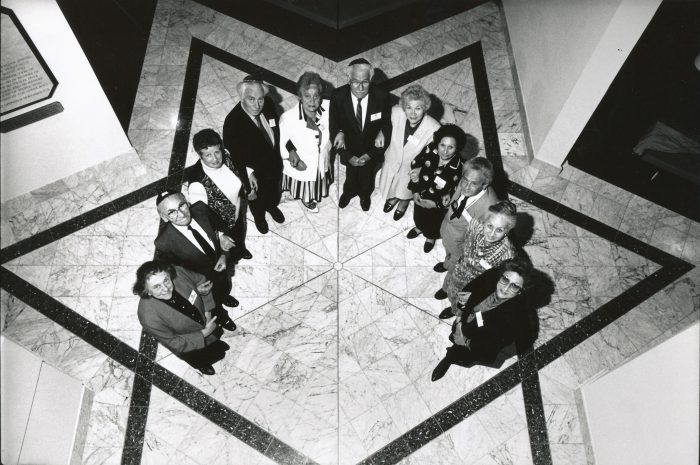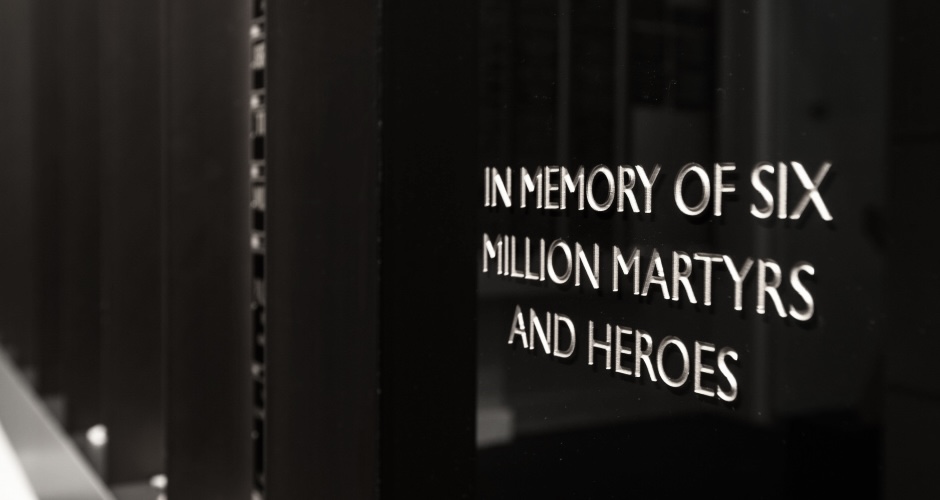History is a craft of respecting, preserving and transmitting memories of the past – but who takes the responsibility for this craft-making process when the very sources of memory begin to fade? From its establishment in 1992, the Sydney Jewish Museum has been a leader in preserving the memories of Holocaust survivors who have found refuge in Australia, ensuring that their histories remain alive and that dynamic conversations surrounding its horrors and legacies flourish into future generations. The Museum itself has been a cultural focal point and meeting place for the Sydney Jewish community, housing an impressive collection of personal objects and original memorabilia related to the Holocaust, Judacia and Australian Jewish history. The extensive range of permanent and feature exhibitions is almost entirely composed of personal donations and artefacts from the Sydney Jewish community, such as identification cards, letters and uniforms; and importantly, completely void of any display of Nazi iconography or infrastructure. This reflects the Museum’s objective to convey the Holocaust history specifically through the personal testimonial narratives of individual, Jewish experiences, not from the voices of the oppressors. These stories are particularly valued for their delicacy, as the Museum foremost acknowledges that survivors relive their memories in retelling them and inviting their audiences to harbour the legacy.

The faithful preservation of memory and authentic Jewish voice has been ever-paramount in the face of the dwindling generation of Holocaust survivors. The custodianship of Holocaust memory has been gradually transitioned from the generation of survivors and their immediate relationship with the past, to their succeeding generations of descendants who grapple with a mediated one. The Museum has therefore successfully incorporated digital technologies to keep survivor voices alive with evolving mediums of history-making – most notably, through the Dimensions in Testimony project, where six Sydney-based Holocaust survivors and their biographies have been preserved using artificial intelligence (AI) and language processing technologies. These new digital projects are also accompanied by the continuously evolving range of online events offered by the Museum, such as historian panellist discussions, blog posts which document historiographical and curatorial discussions, representational mediums such as book launches and film screenings, and virtual workshops and tours, which ensure the longevity of survivor voices.

The Museum also aims to explicate the lessons of the Holocaust through a more universal, intercultural framework. The humanitarian dimensions of the Holocaust and survivor narratives – particularly how it embodies the nadir of humanity, the consequences of prejudice, and the importance of celebrating (rather than annhilating) religious and cultural diversity – are extracted to further and more contemporary issues of morality and human rights. The Museum’s pivotal vision for the intergenerational and intercultural transmission of Holocaust memory is therefore encapsulated by its most recent permanent exhibition, The Holocaust and Human Rights – ensuring that the Holocaust reveals the necessity to lead with empathy in championing the rights of Refugees and Asylum Seekers, People with Disabilities, First Australians and the LGBTQI community. Though I do not identify as belonging to the Jewish community, my sense of connection to this Museum derives from the similar desire for belonging as a person of colour in Australia – reflecting upon what it means to be an ethnic-Other in a hegemonic, Eurocentric landscape which denies my culture (in inconspicuous ways); and writing history as a means to articulate this longing and keep the voices of the past alive.

